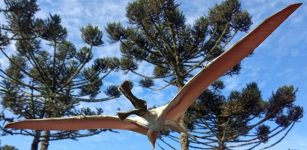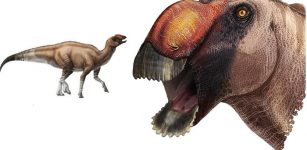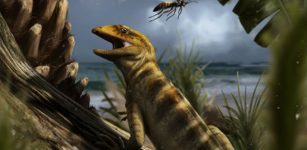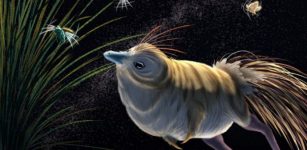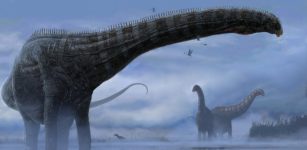Pterosaurs are the flying reptiles that lived side by side with dinosaurs, 230 to 66 million years ago. It has long been known that pterosaurs had some sort of furry covering often called ‘pycnofibres’, and it was presumed that it was fundamentally different to feathers of dinosaurs and birds.
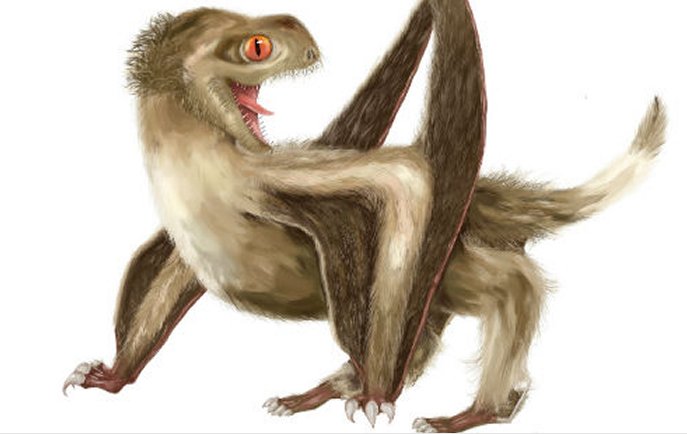
The study shows that pterosaurs had at least four types of feathers:
1) simple filaments (‘hairs’); 2) bundles of filaments; 3) filaments with a tuft halfway down: 4) down feathers.
These four types are now also known from two major groups of dinosaurs – the ornithischians, which were plant-eaters, and the theropods, which include the ancestors of birds.
“We went to Inner Mongolia to do fieldwork in the Daohugou Formation,” Baoyu Jiang of Nanjing University, who led the research, said in a press release.
“We already knew that the sites had produced excellent specimens of pterosaurs with their pycnofibres preserved and I was sure we could learn more by careful study.”
Birds have two types of advanced feathers used in flight and for body smoothing, the contour feathers with a hollow quill and barbs down both sides.
These are found only in birds and the theropod dinosaurs close to bird origins. But the other feather types of modern birds include monofilaments and down feathers, and these are seen much more widely across dinosaurs and pterosaurs.
“We ran some evolutionary analyses and they showed clearly that the pterosaur pycnofibres are feathers, just like those seen in modern birds and across various dinosaur groups,” Professor Mike Benton from the University of Bristol’s School of Earth Sciences, said.
“Despite careful searching, we couldn’t find any anatomical evidence that the four pycnofibre types are in any way different from the feathers of birds and dinosaurs. Therefore, because they are the same, they must share an evolutionary origin, and that was about 250 million years ago, long before the origin of birds.”
The armoured dinosaurs and the giant sauropods probably did not have feathers, but they were likely suppressed, meaning they were prevented from growing, at least in the adults, just as hair is suppressed in whales, elephants, and hippos. Pigs are a classic example, where the piglets are covered with hair like little puppies, and then, as they grow, the hair growth is suppressed.
Professor Benton added: “This discovery has amazing implications for our understanding of the origin of feathers, but also for a major time of revolution of life on land. “When feathers arose, about 250 million years ago, life was recovering from the devasting end-Permian mass extinction.
“Independent evidence shows that land vertebrates, including the ancestors of mammals and dinosaurs, had switched gait from sprawling to upright, had acquired different degrees of warm-bloodedness, and were generally living life at a faster pace.
“The mammal ancestors by then had hair, so likely the pterosaurs, dinosaurs and relatives had also acquired feathers to help insulate them.
“The hunt for feathers in fossils is heating up and finding their functions in such early forms is imperative. It can rewrite our understanding of a major revolution in life on Earth during the Triassic, and also our understanding of the genomic regulation of feathers, scales, and hairs in the skin.”

